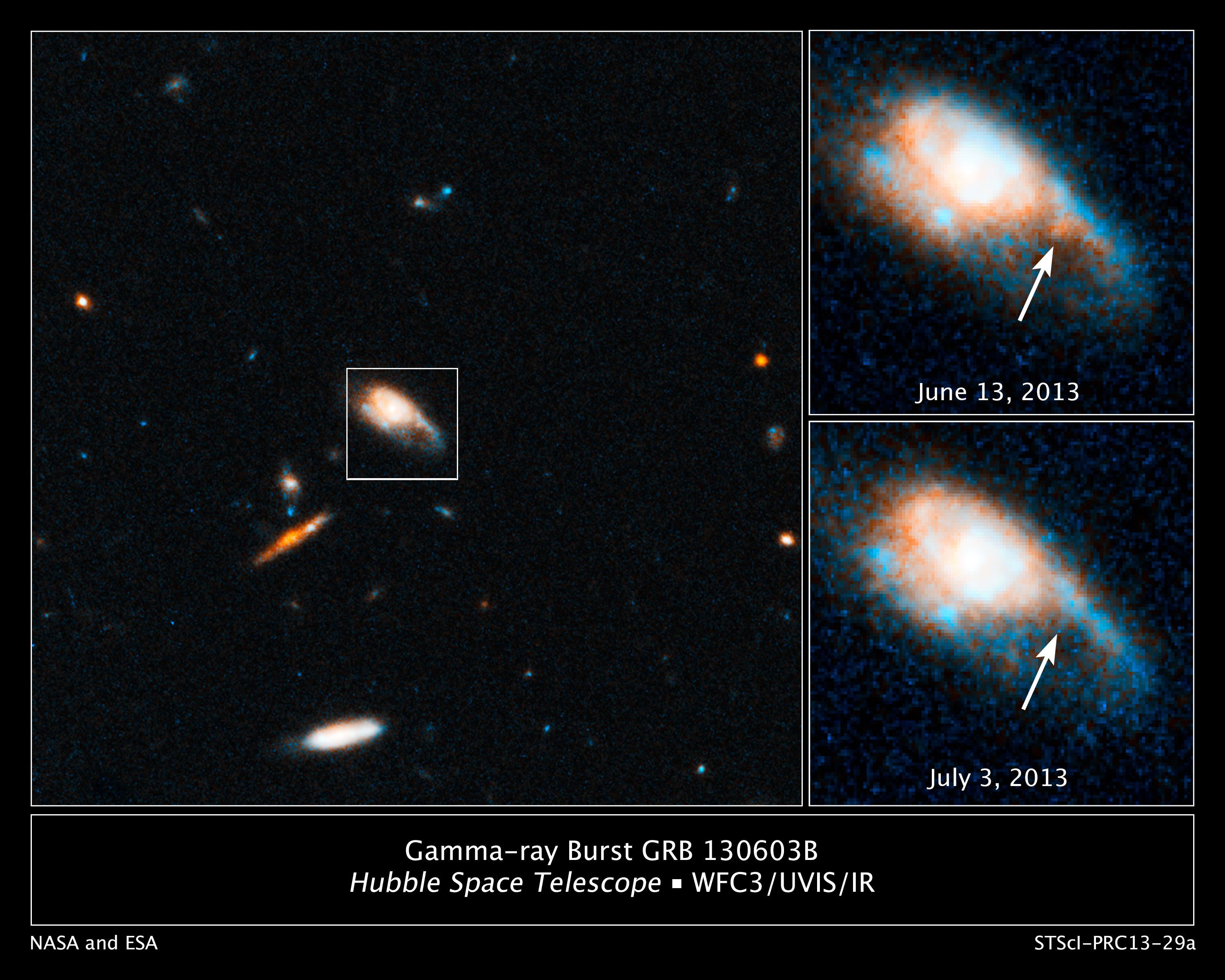Special delivery! See our visiting baby yaks (Dec. 20–Jan. 5) this holiday. Learn more
Science News
Confirmed Source of GRBs?
August 15, 2013
by Alyssa Keimach

Apparently it’s the summer for gamma-ray bursts (GRBs). First we reported on a gamma-ray mystery, then space gold, and now compact mergers. Turns out, they all may be one in the same.
Long-duration gamma-ray bursts are associated with supernova, but elusive short-duration GRBs last less than two seconds, making it hard for astronomers to determine their origin. But we are in luck! Increased detection leads to improved knowledge, and now we may have true answers.
The same short-duration GRB (named GRB 130603B) seen on June 3rd that produced a few moons’ worth of gold was still visible nine days later when the Hubble Space Telescope observed its remains.
Hubble saw a faint red object, which a team of researchers led by Nial Tanvir of the University of Leicester identified as the common signature of a kilonova.
Kilonovas usually result from compact merger events in which decaying elements produce a recognizable optical signal. Because the kilonova and the gamma-ray burst happened together, astronomers can assume causation rather than just correlation.
“This observation finally solves the mystery of the origin of short gamma-ray bursts,” Tanvir said. “Many astronomers, including our group, have already provided a great deal of evidence that long-duration gamma-ray bursts (those lasting more than two seconds) are produced by the collapse of extremely massive stars. But we only had weak circumstantial evidence that short bursts were produced by the merger of compact objects. This result now appears to provide definitive proof supporting that scenario.”
The new knowledge can be used to revise the sequence of events preceding a GRB. First, two extremely dense stars move close together, and approach one another as their gravitational waves disrupt space-time nearby. The stars then “merge into a death spiral that kicks out highly radioactive material,” according to NASA. This explosion culminates with a kilonova. These collisions are about 1,000 times brighter than a nova, but between one tenth and one one-hundredth the brightness of a supernova.
“Previously, astronomers had been looking at the aftermath of short-period bursts largely in optical light, and were not really finding anything besides the light of the gamma-ray burst itself,” explained Andrew Fruchter of the Space Telescope Science Institute and a member of Tanvir's research team. “But this new theory predicts that when you compare near-infrared and optical images of a short gamma-ray burst about a week after the blast, the kilonova should pop out in the infrared, and that’s exactly what we’re seeing.”
As always, this is only the first step in a major discovery. Stay tuned as the research develops!
The findings were published earlier this month in Nature.
Alyssa Keimach is an astronomy and astrophysics student at the University of Michigan and interns for the Morrison Planetarium.
Image: NASA, ESA, N. Tanvir (University of Leicester), A. Fruchter (STScI), and A. Levan (University of Warwick)